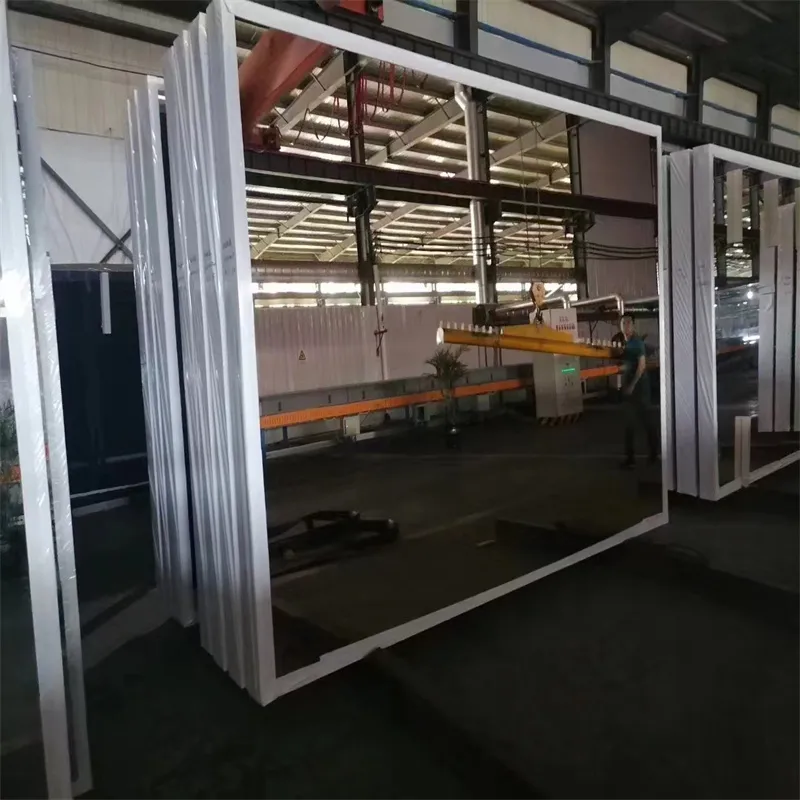10 月 . 01, 2024 10:23 Back to list
Advancements in Laminated Safety Glass Technology for Enhanced Protection and Durability
Laminated Safety Glass An Overview of Its Benefits and Applications
Laminated safety glass has become an essential material in various industries due to its superior strength and safety features. Comprising two or more layers of glass interlayered with a durable resin or polyvinyl butyral (PVB), laminated safety glass stands out as an excellent choice for applications where safety, security, and durability are paramount.
What is Laminated Safety Glass?
Laminated safety glass is produced by sandwiching a layer of plastic, typically PVB, between two sheets of glass. This process involves applying heat and pressure to bond the layers together. The result is a composite material that exhibits unique properties. One of the most notable advantages of laminated safety glass is its ability to hold together even when shattered. The interlayer prevents glass shards from scattering, significantly reducing the risk of injury from cuts and lacerations.
Benefits of Laminated Safety Glass
1. Enhanced Safety and Security The primary benefit of laminated safety glass is its outstanding safety profile. In the event of an impact, the glass is more likely to remain intact due to the adhesion provided by the interlayer. This characteristic is particularly valuable in environments prone to flying debris, such as automotive windshields or glass facades in buildings.
2. UV Protection In addition to physical safety, laminated safety glass offers UV protection. The PVB interlayer can filter up to 99% of harmful ultraviolet rays, thereby protecting interiors from fading and contributing to improved energy efficiency within buildings by controlling heat gain.
3. Sound Insulation Laminated safety glass significantly reduces noise pollution, making it an ideal option for residential and commercial buildings located in busy urban environments. The interlayer acts as a sound barrier, dampening noise from traffic and other external sources.
4. Visual Clarity and Aesthetic Flexibility Laminated safety glass maintains high optical clarity, making it suitable for applications where visibility is crucial, such as glass partitions in offices and large windows in retail stores. Moreover, manufacturers can produce laminated glass in various colors and patterns, providing aesthetic versatility for architectural designs.
laminated safety glass

5. Impact Resistance Beyond just breaking, laminated safety glass also demonstrates enhanced resistance to forced entry. This quality makes it a preferred choice for security applications, including storefront windows, display cases, and even in the construction of safe rooms in residential structures.
Applications of Laminated Safety Glass
The uses of laminated safety glass span a diverse array of industries. In the automotive sector, it is commonly used for windshields and side windows, providing safety and enhancing passenger protection. In architecture, it is favored for facades, skylights, and glass roofs due to its aesthetic appeal and functional benefits. Moreover, laminated safety glass is widely utilized in interior design elements, such as shower enclosures, staircases, and balustrades, where transparency combined with safety is desired.
Furthermore, laminated safety glass has significant applications in the security sector. It is employed in bank teller windows, jeweler display cases, and government buildings, providing an additional layer of security without compromising on the ability to see through the glass.
Future Trends in Laminated Safety Glass
As technology advances, laminated safety glass is evolving to meet the needs of various users. Innovations in interlayer materials are enhancing the performance characteristics of laminated glass, with emerging products that offer increased strength and additional functionalities, such as solar control and self-cleaning properties. Moreover, the growing emphasis on sustainability and eco-friendly materials is pushing manufacturers to explore more environmentally friendly alternatives in the production of laminated safety glass.
Conclusion
Laminated safety glass is an exceptional material that melds safety, aesthetic appeal, and functionality, making it indispensable across multiple industries. As advancements continue to shape its development, laminated safety glass will likely see expanded applications and enhancements, further solidifying its position as a preferred choice for safety and design in modern buildings and vehicles. Whether utilized in an architectural masterpiece, a vehicle, or a simple window, laminated safety glass exemplifies the convergence of safety and style in our everyday environments.
-
Wired Glass: A Strong and Secure Glass Solution for Various Applications
NewsNov.04,2024
-
Tinted Glass: A Stylish and Functional Choice for Modern Homes
NewsNov.04,2024
-
The Elegance and Versatility of Silver Mirrors
NewsNov.04,2024
-
The Advantages of Copper Free Mirrors
NewsNov.04,2024
-
Tempered Glass: A Reliable Choice for Modern Applications
NewsNov.04,2024
-
Pattern Glass: Stylish and Functional Glass for Modern Design
NewsNov.04,2024
Related PRODUCTS














